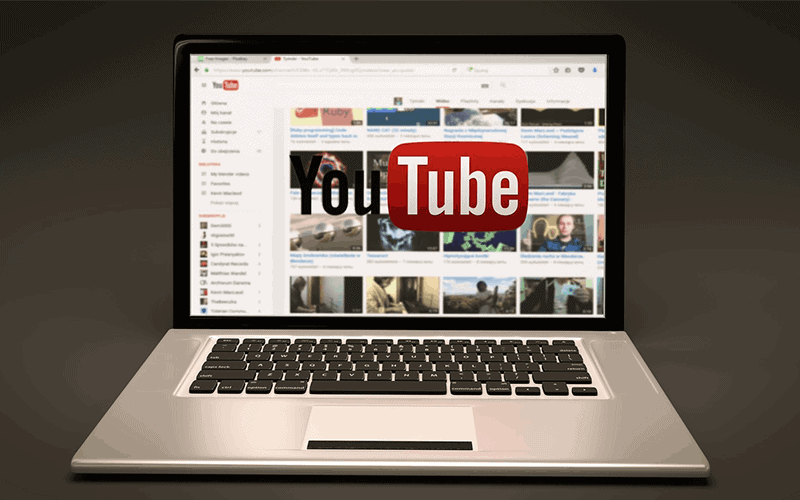
Optimizing Your YouTube Videos for Local SEO

YouTube optimization is an excellent tactic for local SEO, especially since not many businesses have created and published video content and promotions for themselves. In this article, we will be going over some tips for optimizing your YouTube videos for local search.
However, it's important to note that while these tips provide benefits no matter what the video content is, these benefits are amplified when the video content is compelling. This means your primary focal point should be the subject matter and the way you convey it. This is more likely to determine whether or not people will watch your video from start to finish and whether they'll share it with their friends.
Rather than just making an ad about yourself when you create a video, it might be better to publish a series of short videos over time about your industry, products, and services. You can create how-to demonstration videos - these videos tend to be more popular, thus conveying more ranking potential for your business. These types of videos can also establish you as an expert. Sometimes when you explain and show what's involved in what you do, it persuades people to pay to have it done for them.
You can also create videos that teach consumers how to choose what's best for them from the sorts of products you sell. You can even tell them about the different quality of services you offer. These types of videos train consumers to become more knowledgeable and ultimately persuade them to choose you over the competition.
Videos are pretty easy to produce now. You can use a cellphone, digital camera, or high-quality video cams to shoot your videos. Then, there are tons of inexpensive software packages and applications out there that allow you to create and edit videos.
Now that you have a few ideas about what kind of video content to create, here are some tips on optimizing your YouTube videos for local SEO.
1: Add a Link to Your Business Site in the Description
You'll want to make sure you include a link to your business site at the beginning of the video description. While these links are automatically "nofollowed" by YouTube, there seems to be a ranking value conveyed from the video to the business's local search ranking ability. It may be that, while no PageRank is transmitted, Google transfers keyword associations with the link. Or, it might be possible that since there's no way of "nofollowing" citation, the local citation value is being conveyed.
2: Fill up the Description Field
You should mention your address, city location, and phone number in the description box for your video. YouTube is pretty generous on how much they allow in your description. Your initial sentences or paragraph should describe what your video is about, but you can also include a section under that which provides a brief summary of your company. In this section, you can include any differentiators that set you apart from your competition and persuade customers on why they should choose you.
3: Include NAP at the End of your Video
You'll want to include your name, address, and phone number (NAP) in the frames near the end of your video. You can also choose to add your website URL. The text within your videos can be "read" out of the data gathered by Google's algorithms.
You should also state your business name, address, and phone number in the video's audio. It is definitely worthwhile, since it may be automatically converted into text transcripts by Google's systems.
4: Embed Your Videos
You can embed the video on your website page or your blog. The number of embeds is a factor that indicates the popularity of videos. One recurring question about video optimization is whether you should host your videos on your website or keep them on YouTube. Housing them on YouTube seems to be the most beneficial option, as the embed code allows your video to be displayed elsewhere.
5: Geotag Videos
You'll need to "geotag" your videos to associate them with the geocoordinates of your business's location. You can do this by:
- Once on your YouTube Channel, click on "YouTube Studio."
- On the left-hand side, click on "Videos."
- Click on the thumbnail of the video you want to geotag. This will take you to the "Video details" screen.
- At the top, click on "More options."
- Enter the location of your business in the search bar under "Video location."
- Once saved, YouTube will convert and store your location information as longitude and latitude coordinates.
It's not entirely clear how Google uses this information as of right now. In the past, these videos could be accessed through a layer in Google Maps, and YouTube used to offer an advanced option for searching for videos within a particular area. However, these options are no longer available, but there is still data in the background which might continue to impact whether a specific video is deemed to be more relevant for searches in a defined geographic proximity.
Other things associated with the video may be considered more relevant for a location as well. One day, Google might resurface this data, as long as the Video Manager interface continues collecting data from users.
6: Upload Your Videos to Your GMB Listing
You can add videos to your Google My Business listing by:
- Log into your GMB account.
- In the left-hand panel, click on "Photos."
- At the top of the page, click on "Videos."
- Click on the "+" button to add a video.
If you have your videos uploaded to YouTube but don't have them on your computer, you can easily download them from YouTube.
- Click on "YouTube Studio."
- On the left-hand side, click on "Videos."
- Hover over the video you want to download and click on "Options."
- Choose "Download."
Now the video can be uploaded to your GMB listing. Adding videos to your Google My Business listing is great for explaining your products, converting clients, and educating your customers.
7: Add Tags to Your Videos
You'll want to include your business category name and location names as tags on your videos. Because tags have been great tools for YouTube optimization for a long time, you should add a handful of relevant tags for each of your videos. Your video tags can be single word terms or multi-word phrases.
8: Promote Your Videos
Take some time to promote your videos through your social media accounts, specifically Facebook, Google+, Twitter, and Tumblr. By providing your video through the various social media channels where you're promoting your business, potential customers are more likely to come across it and view it. All of the views add up and help your video in rankings. The popularity measures may not just help the video itself rank. In fact, the citational value brought to your business may also help with rankings in local search results.
If you have more than one video, it will be worthwhile for you to optimize your entire YouTube channel with a description and links to your website and social media profiles. Because people like videos, Google likes them too, which has given them a pretty good influence in search. We hope that these YouTube video optimization tips help you augment your local search rankings!
FREE Guide
Stand Out From the Crowd:
Your guide to being visible to local people who need your help
